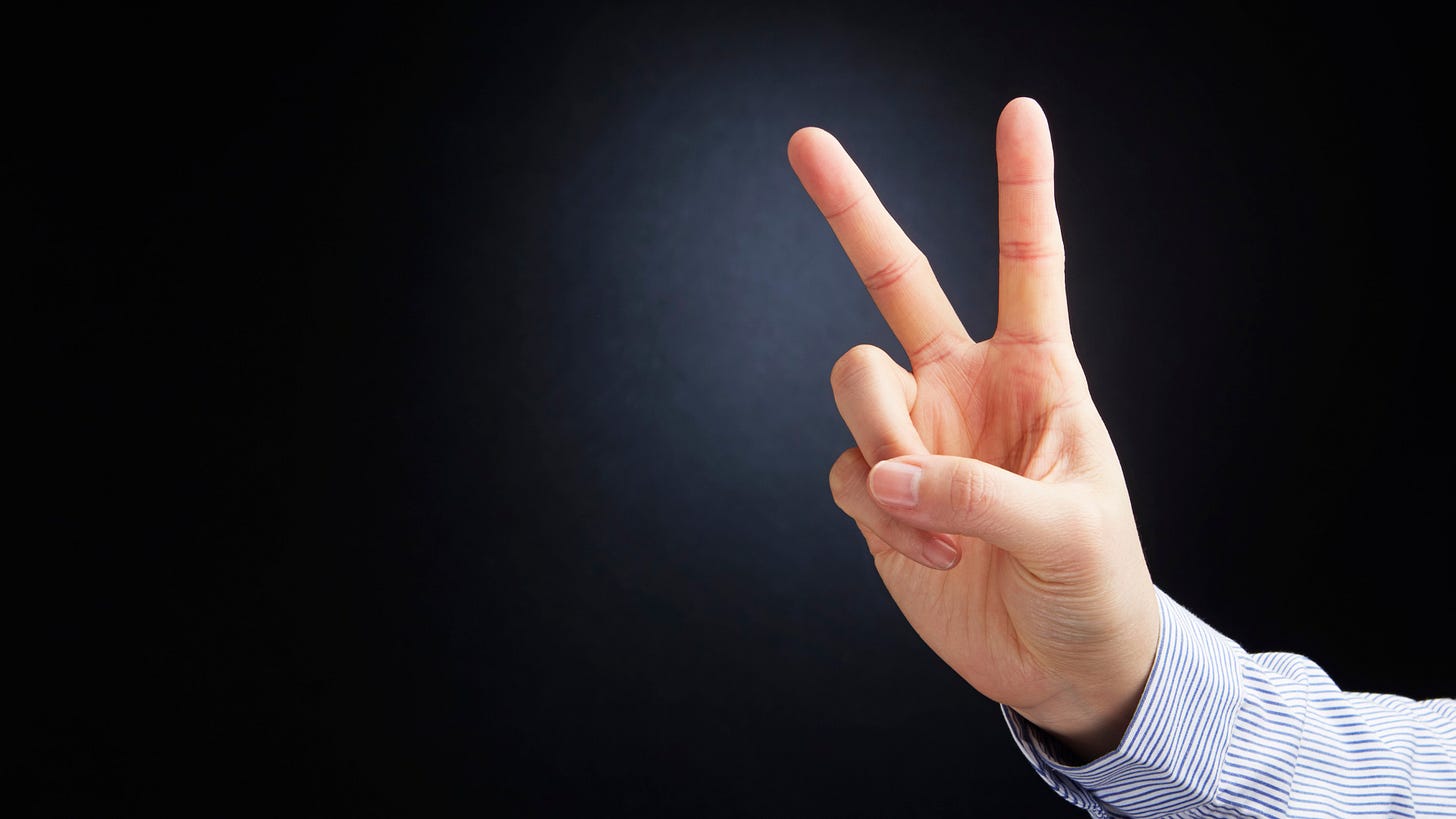Speaking Without Words
A Guide to British Non-Verbal Communication
When you're learning a new language, you often focus on words, grammar, and pronunciation. But did you know that people communicate a lot without saying anything at all? This is called non-verbal communication, and it includes things like hand gestures, body language, and facial expressions.
In Italy, people are famous for their expressive hand gestures. But what about in the UK? Do British people use gestures? And are there any important ones you should know? Let's find out!
Hand Gestures: Less is More (Usually!)
Compared to some other cultures, British people tend to use fewer hand gestures in everyday conversation. However, there are a few important ones to be aware of.
The "V" Sign (Two Fingers Up): This is perhaps the most famous British hand gesture, and it has two very different meanings!
If you hold up your index and middle fingers with your palm facing outwards, it means "peace" or "victory." Think of Winston Churchill during World War II.
However, if you hold up the same two fingers with your palm facing inwards (towards yourself), it is a very rude and offensive gesture, similar to the "middle finger" in other cultures. Be very careful with this one! It's best to avoid it altogether if you're not sure.
Thumbs Up: This is generally a positive gesture, meaning "good," "okay," or "yes."
It's widely understood, but be aware that in some other cultures (parts of the Middle East and West Africa), it can be offensive.
Waving: A gentle wave (moving your open hand from side to side) is used to say "hello" or "goodbye."
Pointing: While common, direct pointing with an index finger can sometimes be considered a little impolite, especially when talking about people. It's often softened by using an open hand or a nod of the head instead.
Body Language: The Unspoken Rules
Body language is how we use our whole body to communicate. In the UK, there are some general tendencies:
Personal Space: British people generally prefer a bit more personal space than people in some other cultures. When talking to someone, try to keep an arm's length distance. Standing too close can make people feel uncomfortable.
Eye Contact: Maintaining moderate eye contact is important. It shows you are engaged and listening. However, staring intensely can be seen as aggressive or rude. It's a balance – look at the person's eyes, but occasionally glance away.
Posture: Standing or sitting upright shows attentiveness and respect. Slouching can sometimes be interpreted as disinterest or boredom.
Folding Arms: Folding your arms can sometimes suggest you are closed off, defensive, or even angry. While it's not always negative, it's something to be mindful of.
Facial Expressions: A Window to Emotions
Our faces are incredibly expressive, and British people use a range of facial movements to show their feelings.
Smiling: A genuine smile is universally understood as a sign of friendliness and happiness. British people smile to greet others, to show politeness, and to express amusement.
Raising Eyebrows:
One raised eyebrow can indicate sarcasm or disbelief ("Really?").
Both eyebrows raised can show surprise or shock.
Wrinkling Nose: This can show disapproval, disgust, or that something smells bad.
Sticking out Tongue: This is usually a childish or playful gesture, often meaning "I'm joking" or "I'm teasing you." It's not usually offensive among friends.
Watch this to help you…
Understanding "Stiff Upper Lip"
You might have heared of the expression "stiff upper lip." This is not a physical gesture, but a very important cultural concept in Britain that relates to how emotions are expressed.
To have a "stiff upper lip" means to be courageous and unemotional in the face of adversity. It means not showing your feelings, especially sadness or pain, even when things are difficult. For example, if someone loses their job but continues to act calmly and bravely, you might say they have a "stiff upper lip."
This concept is less rigid than it once was, and it doesn't mean British people never show emotion. However, there is still a general tendency to be more reserved with strong emotions in public compared to some other cultures. You might notice British people apologising more often than seems necessary, or making light of a difficult situation with humour, rather than expressing deep sadness or anger directly.
Putting It All Together
Learning about non-verbal communication is a fantastic way to improve your English skills and understand British culture better. While it might seem complex, remember these key points:
Be aware of your personal space.
Maintain moderate eye contact.
Use the "V" sign carefully!
A thumbs up is usually positive.
Understand the idea of a "stiff upper lip" for emotional expression.
The best way to learn is to observe! Watch how British people interact, and you'll soon start to pick up on these subtle, unspoken signals.
And if you fancy a little test, try this… Good luck!


